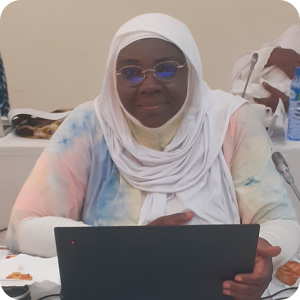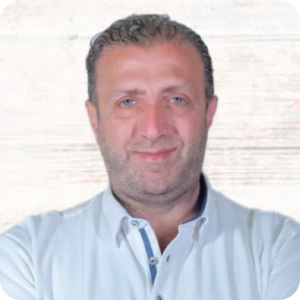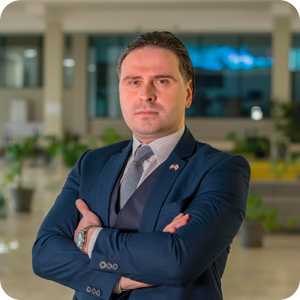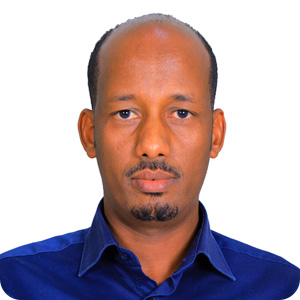Working in the humanitarian sector is more than just a job or career; it involves an intrinsic desire to change the world for the better. Switching environments, getting out of comfort zones, going through challenging and sometimes dangerous situations – these are all part of the “compensation” package that comes with the mission. However, despite this, there is an unexplainable fulfilment that those involved feel as a reward of this experience – to know that their hard work is helping those in need and all the efforts lead to tangible results. Recently, the humanitarian sector has been going through major transformations as have the professionals working in the field. Today, on August 19, World Humanitarian Day, let us take a couple of moments to honor the great work these people are doing by delving into their shared experiences and thoughts.
Key Takeaways:
- World Humanitarian Day is observed annually on 19 August to highlight the efforts of those who work in the field, and to draw attention to the fact that millions of people are in need of humanitarian assistance.
- According to experts, current challenges include chronic under- and constantly shrinking funding, complex and overlapping crises, operational constraints, etc.
- In an era of shrinking funding and multiple simultaneous emergencies, experts state that humanitarian responses must be more efficient, equitable, and locally driven.
- Funding must flow directly to community-rooted organizations and be paired with reciprocal capacity building.
DevelopmentAid: How has the humanitarian sector evolved over the last decade, and what are its current biggest challenges?

“Over the last decade, the humanitarian sector has evolved from providing emergency relief towards resilience building and long-term development, with education increasingly being recognized as a life-saving intervention. Education in emergencies has gained global attention for its role in restoring normalcy, protecting children, and supporting psychosocial healing during crises. Despite this progress, access to quality, inclusive education remains a significant challenge, particularly for displaced and marginalized communities. Current challenges include the chronic underfunding of education in humanitarian responses, disrupted learning due to conflict and climate-induced displacement, and a lack of coordination between education and other sectors. Additionally, local educators and education leaders are often left out of response planning. A better integrated, locally led approach is essential to ensure continuity of learning and long-term impact.”

“Over the last decade, the humanitarian sector has undergone profound and rapid change. The volume of humanitarian needs has exploded, particularly with the proliferation of conflicts and the rise of complex crises combining armed conflict, natural disasters, and climate change. There has also been an increased globalization of the sector, with an expansion in the number of organizations and personnel mobilized, as well as a growing power of local actors in the implementation of aid. Furthermore, essential debates have emerged around the decolonization of aid, the centrality of national governments, the need for more local and tailored responses, and the link between humanitarian aid and long-term development. Despite a significant increase in humanitarian funding with an apogee of US$47B in 2022, resources are now rapidly shrinking, and remain woefully inadequate given the scale of needs, which now affect more than 300 million people. This lack of funding creates a growing gap between demand and response capacity. Furthermore, the sector faces major security challenges, with rising violence against humanitarian workers and increasing access restrictions being imposed by political actors and armed groups. At the same time, the politicization of aid, rising populism, skepticism toward organizations, and geopolitical tensions are further complicating humanitarian action. Thus, the main current challenges are the management of growing and multiple needs in a constrained financial context, the securing of interventions, the adaptation to geopolitical changes and the professionalization of the sector to remain effective and legitimate in the face of these challenges.”

“The last decade has been characterized by donor fatigue and a shrinking of humanitarian aid budgets, with governments prioritising defense over foreign aid spending. The starkest example is the recent dismantling of the biggest aid donor, USAID, but key donors like the United Kingdom, Germany, and France have also reduced their budgets. This has been accompanied by the rise of populist parties and disinformation campaigns, as well as the shrinking of civic space. Non-governmental organisations have come under increased scrutiny, with governments in Russia, India, Poland, and Hungary implementing policies aimed at restricting the role of civil society. A further step in this direction has been the criminalization of humanitarian aid observed in Europe, where individuals have faced criminal or administrative proceedings for acting in solidarity with migrants, particularly through rescue efforts at sea. The media monitoring carried out by the Platform for Undocumented Migrants found that at least 142 individuals faced such proceedings in the EU in 2024, particularly in Greece and Italy. Another key development is the increased involvement of private companies as logistics providers, advisors to INGOs, evaluators of programs, and other types of intermediaries. This poses concerns about transparency and accountability challenges, and contributes to the further shrinking of civic space, and may even displace traditional humanitarian actors.”

“Over the past decade, the humanitarian sector has seen a shift toward localization, digital innovation, and stronger partnerships with development actors. There is growing recognition that humanitarian efforts must be context-specific, inclusive, and resilient. Technology has improved data collection, coordination, and early warning systems, while funding models have become more diversified. However, significant challenges remain. The increasing frequency of climate-related disasters, protracted conflicts, and forced displacement have overwhelmed the existing systems. Donor fatigue, geopolitical fragmentation, and bureaucratic constraints also hinder agile responses. The lack of trust between international actors and local communities persists. Addressing these issues requires flexible funding, inclusive governance, and greater emphasis on preparedness and sustainability.”

“While humanitarian actions have certainly saved a lot of lives, there are recurrent challenges that need to be addressed. In recurrent crises, most people feel that the humanitarian actions are repetitive and do not focus on prevention and preparation. The involvement of local actors is minimal, reducing the sustainability of the actions. It seems as though humanitarian actions are not sufficiently aligned with the Sustainable Development Goals. Therefore, the cost-effectiveness of some actions has been questionable for decades. The triple nexus of humanitarian-development-peace should evolve to become a nexus plus where the intervention is not only collaborative between the three sectors but also molded into one sector with different objectives that are interlinked.”

“The sector is getting bigger and smarter but faces shrinking funds, growing crises, and dangerous politics. Bigger, due to better coordination, with more being spent on TOR and standards, in addition to the newly evolved technology and the support derived from artificial intelligence. The sector is faced with shrinking funds and dangerous politics, which are causing growing crises and which are more striking when vetoes paralyze UN decisions. These two factors may combine leading to more suffering. UNRWA is an example, where its determination to fight back the IDF attacks by helping the abandoned Palestinians decreased the support it received from some donors, in addition to the attacks on its aid workers. Reality bites, humanity isn’t equally granted to all.”

“Over the last decade, humanitarianism has shifted from fragmented aid to globalized systems. We see improved coordination and tech-driven assessments, yet face mounting crises. Today’s biggest challenges include donor volatility, political access restrictions, climate-conflict convergence, and the erosion of neutrality in active war zones. The rise of militarized aid compounds risk. True resilience demands recalibrating strategy with ethics, empowering local voices, and restoring principled humanitarian space. The sector must move beyond technocracy and reclaim its soul.”

“Over the last decade, the humanitarian sector has evolved to address increasingly complex and overlapping crises – from protracted conflicts to climate-induced disasters and forced displacement. While professionalization and coordination have improved, challenges persist: donor fatigue, underfunding, and growing needs outpace the available resources. The sector also continues to grapple with power imbalances and the limited inclusion of local actors. Looking forward, the humanitarian system must prioritize localization. In an era of shrinking funding and multiple simultaneous emergencies, responses must be more efficient, equitable, and locally driven. Concrete examples, such as Rewilding Argentina, show how conservation and community-led development can go hand-in-hand — by directly involving local people in restoration efforts and ensuring they benefit from the outcomes. To empower local actors, urgent steps include shifting decision-making power, building long-term partnerships, and sharing financial and operational risks. This dual focus on solidarity and local empowerment is essential to transform humanitarian action for the future.”

“Over the last decade, the humanitarian sector has evolved significantly driven by increasingly complex and prolonged crises linked to climate change, conflict, and economic instability. This shift has prompted a dual focus on immediate relief and long-term resilience. There has been a growing emphasis on accountability to the affected populations and the use of technology for data-driven aid delivery. However, the sector faces mounting challenges: shrinking operational space, rising attacks on aid workers, the politicization of aid, and persistent funding shortfalls amid global emergencies.”

“Over the last decade, humanitarian efforts in Nigeria have evolved from emergency relief to more integrated responses. In the Northeast, interventions addressing the Boko Haram crisis now include livelihood support and peacebuilding efforts, such as the COMITAS project, which promotes social cohesion and minority inclusion. Cash-transfer programs by WFP and local NGOs have empowered communities with dignity and choice. Yet, major challenges persist. Protracted displacement in Borno, farmer-herder conflicts in the Middle Belt, and recurring floods in Benue and Bayelsa underscore the growing intersection of conflict, climate shocks, and weak institutional frameworks. Meanwhile, declining donor support and operational constraints hamper response efforts.”
See also: Experts’ Opinions| Being a Humanitarian Aid Worker: vocation, job, sacrifice and reward (PART I)

“The humanitarian sector has experienced considerable transformation over the last decade. There is an increasing focus on empowering local actors and communities to take charge of humanitarian responses. This change highlights the value of local expertise and capacity in managing crises effectively. Some challenges noted are around access and security with humanitarian access continuing to be a major obstacle, particularly in regions affected by conflict and political instability (e.g., Gaza, South Sudan, DRC). Additionally, security risks for aid workers have escalated. Political influences mean humanitarian efforts are often shaped by political agendas, which can complicate issues of neutrality and impartiality. Geopolitical tensions also impact funding and access to the affected areas.”
DevelopmentAid: How do you see the future of the humanitarian sector in an era of donor fatigue and multiple simultaneous emergencies?

“In an era marked by donor fatigue and layered emergencies, the future of the humanitarian sector depends on investing in systems that empower communities to become self-sustaining, starting with education. Education is a long-term stabilizer that builds individual agency and community resilience. Future humanitarian efforts must prioritize education as a cross-cutting solution that links health, livelihoods, and social cohesion. Localizing education responses by supporting teacher training, digital learning tools, and community-based curricula can help to maintain continuity of learning despite disruptions. To remain effective, the sector must also embrace adaptive financing models and strengthen collaboration across sectors. Humanitarian education should no longer be treated as an afterthought but as a core pillar of sustainable recovery and prevention.”

“The future of the humanitarian sector promises to be complex, but one that will bring necessary transformations. Faced with growing donor fatigue and the proliferation of simultaneous crises (climate, health, geopolitical), the current model is reaching its limits. Resources are stagnating, while needs are exploding. To survive, the sector will have to reinvent itself. Localizing aid, by strengthening the capacities of local actors, is becoming a strategic priority: more efficient, less costly, and more legitimate. Innovation will also play a key role whereby artificial intelligence, data, digital money transfers, low-carbon logistics, etc. will enable a faster and more targeted response. But beyond the tools, an ethical and political review is needed: strengthening accountability to populations, reducing duplication, and moving away from a logic of permanent crisis management. The “triple nexus” (emergency, development, peace) will need to be better integrated to anticipate shocks rather than simply react to them. Despite the challenges, a more agile, locally anchored, and proactive humanitarian response is possible. However, it will depend on real political courage and renewed commitment, including from civil society, to defend international solidarity that is under severe strain.”

“Private actors are likely to be increasingly active in the humanitarian sector. As a recent ODI Global podcast discussed, the privatization of humanitarian aid is highly problematic: it is harder to hold private actors accountable, there is a lack of transparency around their involvement, they possess weak to no existing links to the local communities, and their involvement may result in the displacement of NGOs. Private companies prioritize profit and efficiency over empathy and solidarity; cooperation with them is driven by logistics, military calculations, and donor risk management rather than humanitarian principles. The recent scandal around the Boston Consulting Group’s involvement in the design of the Gaza Humanitarian Foundation, as well the firm’s “relocation packages” proposal for Palestinians, which could be used as a tool for population control and ethnic cleansing, should be seen as huge warning signs. US private company Fogbow’s problematic involvement in South Sudan is another example. Donor institutions should push for private actors to be held accountable and prioritize the involvement of NGO and INGOs instead. In turn, local and international NGOs and UN Agencies should also distance themselves from private actors to ensure that their role remains limited and to protect humanitarian spaces.”

“The future of the humanitarian sector will depend on its ability to adapt structurally and operationally. With limited donor resources and growing needs, the sector must prioritize efficiency, transparency, and innovation. Strengthening local capacity is key – local actors are often first responders and better positioned to deliver context-appropriate aid. Strategic partnerships with the private sector and non-traditional donors will become more critical. Blending humanitarian and development approaches can ensure longer-term impact. Moreover, shifting toward anticipatory action and risk reduction will be essential to prevent crises rather than simply responding. Despite the challenges, the sector can thrive by being more inclusive, accountable, and forward-thinking.”

“The long-standing approach of a divided cycle of intervention in crises seems to be no longer appropriate. The donor should advocate for the implementers to consider any intervention to be development-oriented. Therefore, the saving lives process could be part of the development process based on the autonomy and resilience of the population. Some reports claim that more than 70% of crises are considered to be prolonged crises. The one-shot intervention to save lives is not enough since the population should be better prepared to absorb, analyze, and transform their immediate environment to reduce the risk of catastrophe. The humanitarian community should move to one single and unique cycle of intervention where emergencies, transition, and development coexist at the same time.”

“There should be a change of strategy regarding fundraising. Some donors relate their donation to certain political goals or some other personal reasons. Each government should implement its own ongoing annual fundraising plan with its people, because they know best the problems that their community face and their needs. Not all nationals are needy, with small donations on a national level that can make a difference and improve the economy with the help of governmental and local coordination.”

“In an era of donor fatigue and chronic emergencies, the sector must pivot from reactive charity to predictive solidarity. Diversifying funding, embedding humanitarian intelligence, and integrating PKISR principles will drive anticipatory action. We must strengthen regional partnerships, activate diaspora networks, and scale locally owned early warning systems. Humanitarian strategy must become ethically agile, transparently accountable, and tactically informed. The future belongs to those who transform aid into foresight-driven resilience – rooted in trust, not dependence.”

“Looking forward, the humanitarian system must prioritize localization. In an era of shrinking funding and multiple simultaneous emergencies, responses must be more efficient, equitable, and locally driven. Global solidarity must translate into long-term investment in community-led action.”

“Looking ahead, donor fatigue and overlapping crises will demand greater efficiency, transparency, and impact measurement. Diversifying funding through private sector engagement and innovative financing is vital. A strategic pivot toward prevention and early action is expected to reduce the impacts of future crises.

“To ensure long-term impact, the future must be locally led. This means channeling direct funding to grassroots organizations like ALFANI and the JIREH Doo Foundation, promoting genuine capacity-sharing, involving communities in program design, and strengthening accountability mechanisms. Local actors are often the first responders and longest-serving partners in crisis settings. Empowering them is not just ethical, it’s strategic. A resilient, inclusive humanitarian system must be grounded in local leadership and global solidarity.”

“There is a growing recognition of the importance of local actors in humanitarian response. Future efforts may prioritize capacity building for local organizations, enabling them to lead responses and reduce reliance on international agencies. This shift could enhance sustainability.”
DevelopmentAid: In line with the 2025 World Humanitarian Day theme, “Strengthening global solidarity and empowering local communities,” which steps are the most urgent to ensure that local actors can play a leading role in responses?

“To empower local communities in humanitarian responses, we must urgently shift from centralized control to localized leadership, especially in the education sector. Firstly, international donors and agencies must provide direct, sustained funding to local education actors who understand the needs, languages, and cultural contexts of their communities. Secondly, capacity building should focus on long-term investment in local teacher training, curriculum development, and school governance. Thirdly, education coordination platforms should include grassroots voices in decision-making, not just consultation. When children are out of school due to conflict or disaster, local educators are often the first responders yet the last to receive support. Strengthening solidarity means recognizing that education is both a right and a powerful tool for empowerment and recovery.”

“For local actors to play a central role in humanitarian action, several urgent measures are needed. Firstly, we need to reform funding. Currently, less than 2 % of international humanitarian aid is allocated directly to local organizations. It is essential to simplify access to funds, increase the share of direct, flexible and multi-year funding, and recognize the legitimacy of local actors as first responders. Next, we need to invest in capacity building, not in a top-down way, but through equitable partnerships that are based on trust, knowledge sharing, and the mutual recognition of expertise. This includes training, technology transfer, and logistical support. Finally, it is crucial to include local stakeholders in the coordination, decision-making, and evaluation processes from the very beginning of interventions. Their participation must no longer be symbolic, but structuring. Strengthening global solidarity also means agreeing to share power. Empowering local communities requires a profound shift in humanitarian culture that is oriented toward equity, subsidiarity, and accountability to the populations concerned.”

“While there has been increased emphasis on localization since the Grand Bargain commitments, there is a growing concern that the current forms of localization help to maintain the status quo rather than rebalancing power between international and local actors. Concrete steps to meaningfully involve local actors in decision-making processes are needed. The International Council of Voluntary Agencies and the Network for Empowered Aid Response play a key role in this area, participating in the Inter-Agency Standing Committee – a forum for UN and non-UN humanitarian actors – and regularly providing recommendations on coordination processes and policies. Another key step is to ensure that local actors have direct access to funding. A study on funding from five major donors (Australia, Canada, the Netherlands, the UK and the US) by Publish What You Fund found that in the 2024 fiscal year, only 5.5% of project-type funding went directly to local organizations. Going beyond the UN’s Country-Based Pooled Funds, locally led humanitarian funds allow local NGOs greater freedom and agency. The NEAR Change Fund, the regional Consultative Group of Risk Management fund in Central America, the Nabni Building for Peace facility, and the Global Start Fund are good examples.”

“Empowering local actors requires more than rhetoric – it demands structural change. Firstly, donors and international agencies must commit to direct, predictable funding for local organizations, reducing reliance on intermediaries. Secondly, capacity strengthening should be tailored to local priorities, respecting existing knowledge and leadership. Thirdly, local actors must be included in decision-making processes at all levels, from coordination to policy development. Strengthening legal frameworks that enable local organizations to operate freely and securely is also vital. Finally, accountability mechanisms must be mutual – local actors should shape and assess aid effectiveness. True solidarity means creating space for local leadership, not just participation.”

“It is perhaps ambitious to request that all international projects should have at least one local actor as an implementer, but it seems to be the only viable way to a greater involvement of local actors in humanitarian actions. This will stimulate the partnership with local actors but also enable local actors to access funding when the capacity is proven. Local actors will be part of the decision-making process. Some actors argue that local actors do not have the capacity to intervene and manage on their own. But with no involvement of local actors, their resilience and autonomy capacities will never be strengthened. It is also clear that the Sustainable Development Goals will not be reached without the full local involvement. Therefore, the humanitarian community should find mechanisms that sensibly increase their involvement.”

“It has always been that locals know best about the solutions for any problem ahead. But the obstacle they face is related to funding. Cluster coordination is one solution. The cluster may include the related ministry, consultants, local actors, UN agencies and any donor that has a fund and is willing to help. This cluster or forum can trigger any solution if properly circulated and discussed between the cluster members. When unity is in action, solidarity prevails.

“To elevate local leadership, we must urgently dismantle paternalistic systems and embrace co-authorship. Funding must flow directly to community-rooted organisations, paired with reciprocal capacity building. Localization must go beyond logistics – it demands trust, shared risk, and moral equity. Global solidarity in 2025 will not be measured by pledges but by who holds the pen during a crisis response. Local actors are not beneficiaries – they are strategists, peace-builders, and the true architects of sustainable humanitarian impact.”

“To empower local actors, urgent steps include shifting decision-making power, building long-term partnerships, and sharing financial and operational risks. Models like Rewilding Argentina show how conservation and community-led development can go hand-in-hand by directly involving local people in land restoration and ensuring they benefit from the outcomes. Similarly, humanitarian responses must move from top-down aid to collaborative, context-sensitive approaches that build local resilience.”

“Aligned with the 2025 theme, the sector must prioritize localization. This includes direct funding to local organizations, tailored capacity-building, and equitable decision-making. Moving away from top-down models, partnerships should be built on trust and mutual respect, recognizing local actors’ unique insights and access. Advocacy for policy reforms that promote localization and dismantle entrenched power imbalances is essential to creating a more inclusive and effective humanitarian system.”

“The future of humanitarian response is leaning towards strengthening local partnerships and leveraging technology to create more effective and sustainable interventions. By focusing on local solutions, root causes, social norms and integrating advanced technological tools, organizations can improve their impact and responsiveness in crisis situations.”
See also: Experts’ Opinions| Being a Humanitarian Aid Worker: vocation, job, sacrifice and reward (PART II)
There are many opportunities in the humanitarian sector, but they are not always visible during the initial search, being spread across different organizations and platforms. To identify these, it is recommended that specialized sites such as DevelopmentAid are followed as it publishes daily announcements in the field and provides the largest number of job openings in the international development sector. Moreover, with the Individual Professional Membership, members gain access to thousands of job opportunities, donor and organization profiles, tenders and grants for individuals, salary trends, and information on awarded organizations. Members also benefit from profile visibility to 5,287 organizations, publishing opportunities, customizable alerts, CV tools and services (generation, revision, tailoring, broadcast discounts), and time-saving resources like recorded webinars and shortlisted organizations.
Join now to benefit from a special offer on World Humanitarian Day with DevelopmentAid – enjoy 20% off Professional & Professional Plus Membership!


